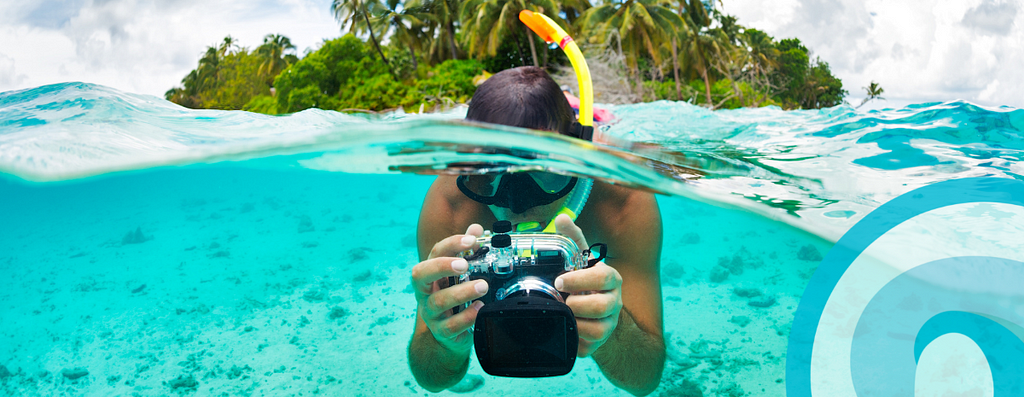The World of Underwater Videography

We’ve talked about scuba diving and free diving, and how amazing these experiences can be for those seeking to appreciate marine life in new ways. But what if you’d like to take diving one step further, by capturing images and clips of your underwater travels?
Underwater photography and videography are somehow both easier and harder than they seem. While it might appear as though all you need to do is buy an underwater camera and get swimming, there are some basic tenets of diving and shooting that one must learn before one’s able to appropriately capture content beneath the ocean’s surface. To make videos that stand out, consider some basic principles we’re presenting. They might even spark ideas for further research, or inspire you to book a scuba diving and photography course!
Getting the Right Equipment and Gear
An obvious part of underwater photography is making sure you have the right underwater equipment! There is actually a wide array of equipment and gear available for purchase from beginner to expert level at a wide range of price points. Of course, different cameras are better for different types of photos and videos. Get clear on what you’re aiming to capture underwater before you add anything to your shopping cart.
Even more important than knowing which camera to buy is knowing how to properly transport and utilize it. Doing your research before investing in any diving or photography equipment is critical. Investing energy into doing background research now will save you money and mistakes down the line.
Mastering the Basics
When new divers see something exciting they want to snap a photo of, they easily forget the basic safety principles of diving. Remember that when diving, we are guests entering another habitat. It should be a high priority not to disturb the marine environment in any way, while also maintaining your own personal safety. Gaining experience with buoyancy and control over your body underwater will help prevent accidental run-ins with coral reefs or ocean creatures.
Practice communicating and staying with your group, listening to your guide or instructor, and mastering basic skills. These are important steps before adding a camera to the situation.
Understanding and Respecting Your Subject
As with all underwater activities, maintaining the integrity of the habitat is of the utmost importance. Humans cause enough damage to coral reefs and marine ecosystems, and you don’t want to create even more disruption whilst diving and recording. Make sure to respect and maintain the appropriate distance between you and your subject, especially as a beginner. It’s always good to consult an expert for advice in this arena.
It’s also important to know the basics of what sort of organisms you might be seeing during your dive, for safety purposes. Knowing how the animals may act when they spot you is important. It might also help you decide what is worth recording. By fully understanding what and where is going on in a marine ecosystem, you can be a better guest in their habitat. Knowledge about a reef and its inhabitants will help you record better footage. Utilise online resources and local guides to learn as much as you can about how regional organisms interact and behave. This simple knowledge could increase the value and intrigue of your footage tenfold.
Getting an Expert Teacher or Mentor
In order to learn the basics of videography, it might be useful to take a class from an experienced teacher. They can share easy and simple tricks that might greatly increase the quality of your pictures and videos. Otherwise, you may never know these simple changes that could make big differences. Be sure to do your research before embarking on your underwater videography journey, so that you can make the most out of your gear and experiences.
Want to learn more about underwater videography from a real expert in the field? Join us this Wednesday at 12pm UTC live on our Instagram page for an interview with Kaushiik Subramaniam, a wildlife conservation biologist and filmmaker. SEAstream #33 will be all about this topic, so come join us to learn more about capturing the underwater world on camera!

Leave a Reply